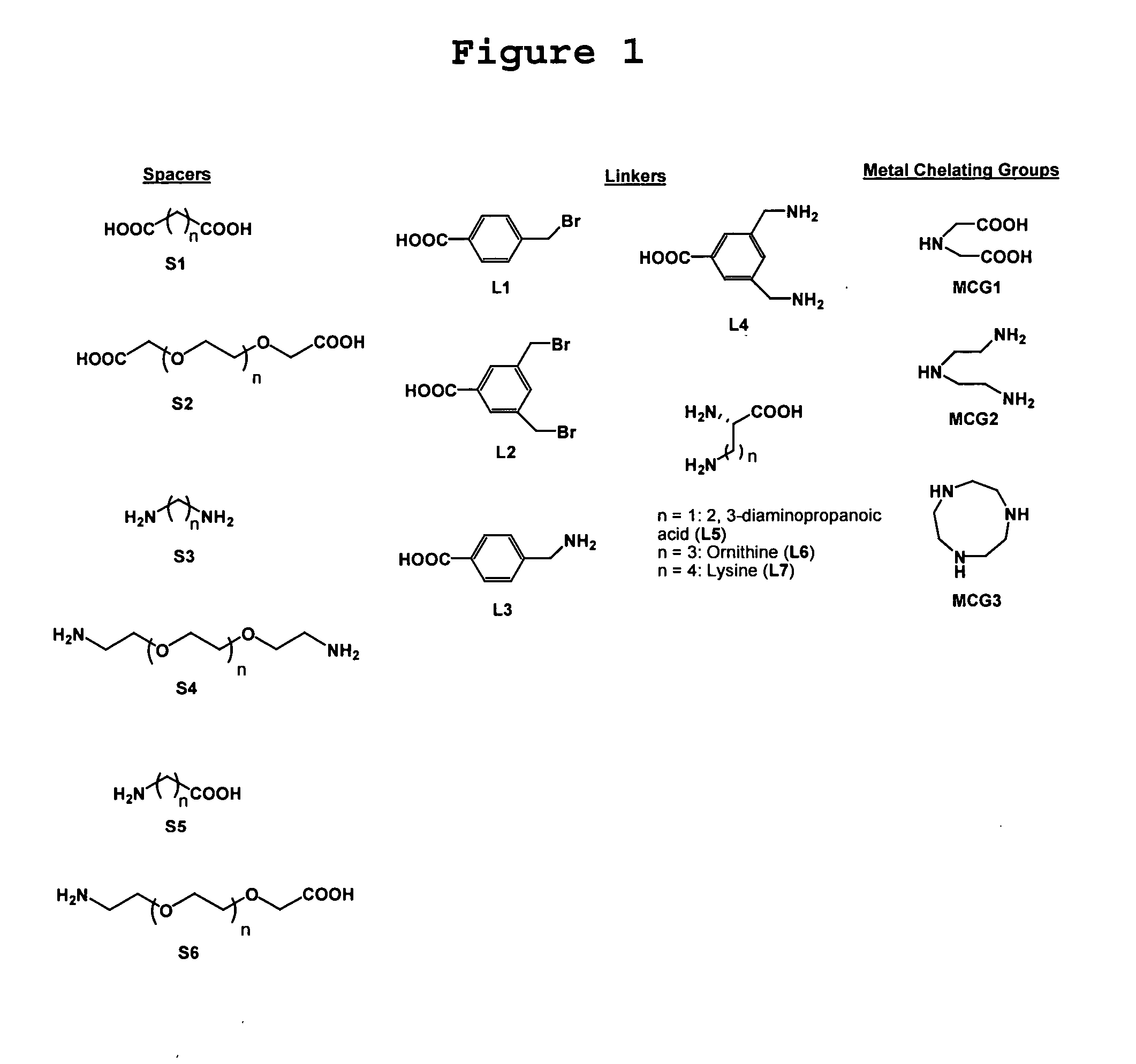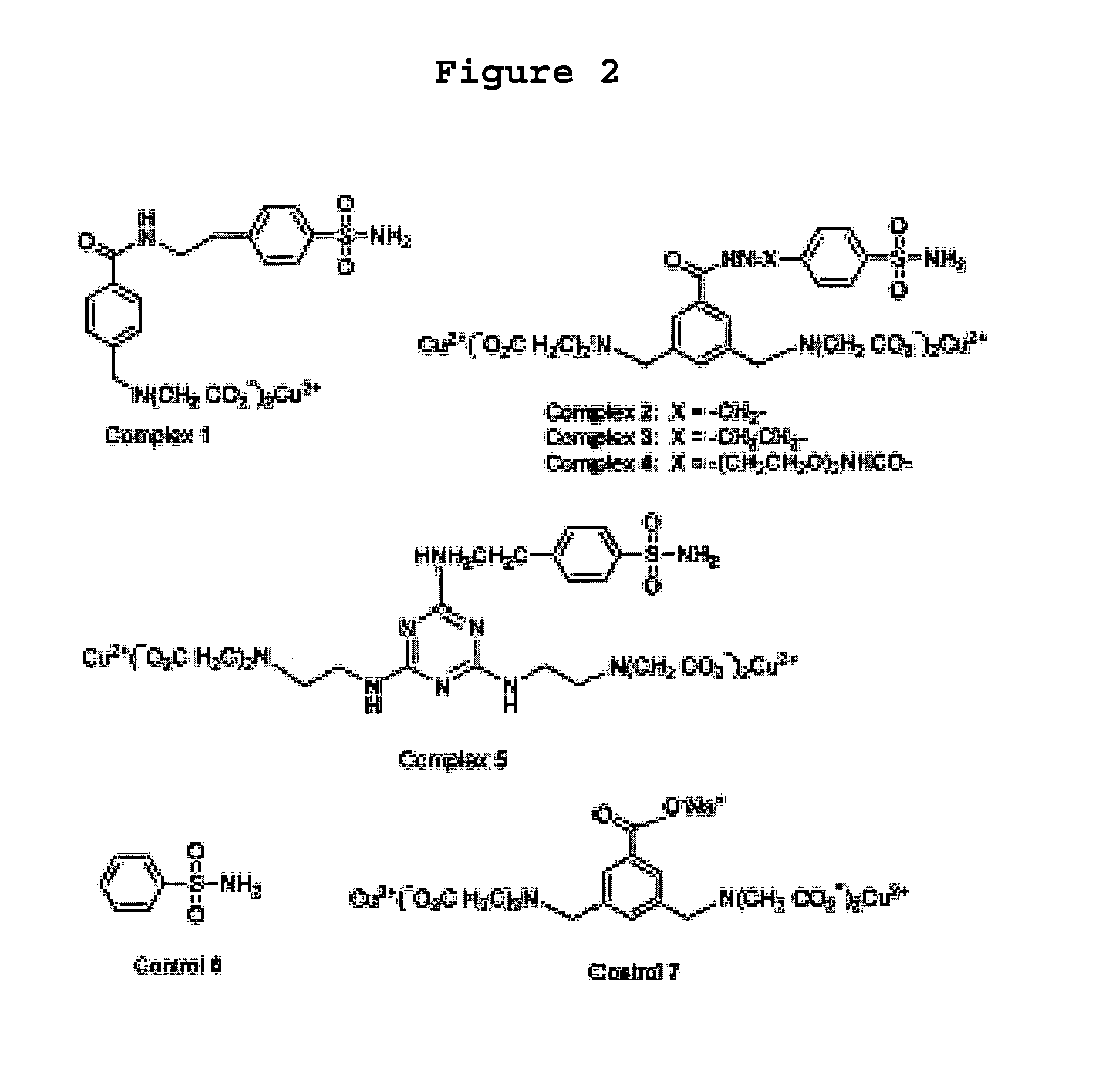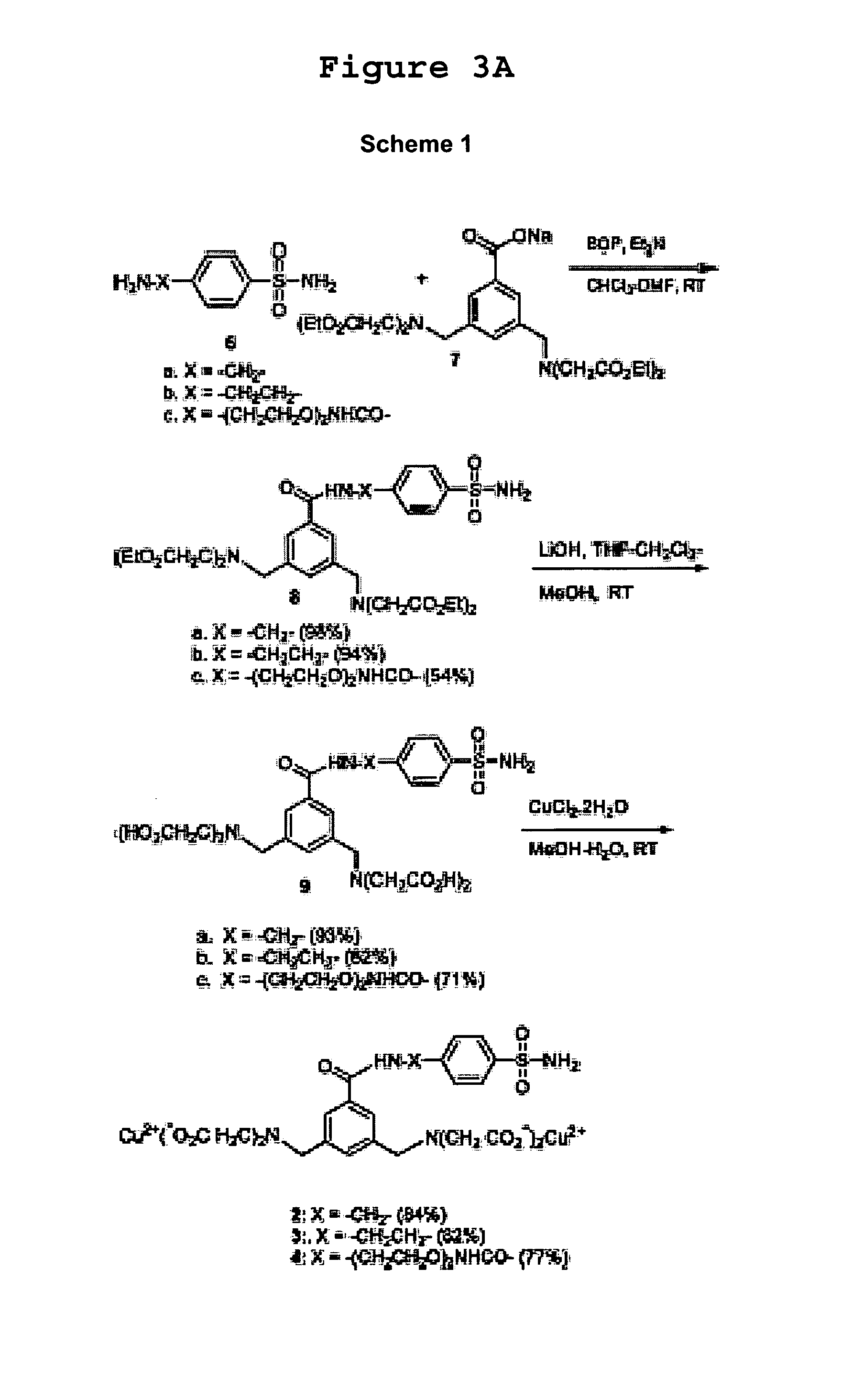Methods and materials for enhancing the effects of protein modulators
a protein modulator and protein technology, applied in chemical methods analysis, chemical treatment enzyme inactivation, instruments, etc., can solve the problems of difficult to exploit structural flexibility in drug design endeavors, fundamental limitations in the structure-based approach to designing drugs, etc., and achieve the effect of enhancing the effect of a protein modulator on a protein
- Summary
- Abstract
- Description
- Claims
- Application Information
AI Technical Summary
Benefits of technology
Problems solved by technology
Method used
Image
Examples
example 1
Modified Inhibitors of Carbonic Anhydrase
[0070] Inhibition of carbonic anhydrase is important for the treatment of glaucoma and cancer. Usually, the clinically approved inhibitors are the sulfonamide class of compounds. Conjugation of the high-affinity sulfonamides with bile acids, short peptides, amino-polycarboxylate ligands and their metal complexes further enhances inhibition efficiency.
[0071] In this Example 1, we report a strategy to convert a poor inhibitor to a good inhibitor by attaching a surface-histidine recognition group to the inhibitor. Benzene sulfonamide, a rather weak inhibitor for carbonic anhydrase (Kd=120 μM), was converted to a very good inhibitor for the enzyme (Kd=130 nM) as a result of this conjugation.
[0072] To demonstrate the proof-of-concept, five Cu2+-complexes set forth in FIG. 2 were designed and synthesized. The synthetic details for these five complexes are set forth hereinbelow in Example 2. In these complexes, the benzene sulfonamide binds to th...
example 2
Details Regarding the Preparation and Characterization of Modified Inhibitors of Carbonic Anhydrase
[0083] This example described further details regarding the syntheses of complexes 1-5 as depicted in FIGS. 3A and 3B (Schemes 1-4).
[0084] Compound 12 was prepared as follows. Br-tBut ester 11 (Shirai et al., J. Org. Chem., 55:2767-2770 (1990), which is hereby incorporated by reference ) (7.73 g, 28.54 mmol), diethyliminodiacetate (4.50 g, 23.78 mmol), and K2CO3 (12.0 g, 85.7 mmol) were mixed together in CH3CN. The resultant mixture was refluxed for 12 h. Solid was filtered and washed with CH3CN. The solvent was removed in vacuo. The crude product was purified by silica gel column chromatography with 20% ethyl acetate in hexane (Rf=0.6) to afford a viscous liquid. Yield: 7.0 g (77%). 1H NMR (300 MHz, CDCl3) δ 1.31 (t, 6H, J=7.0 Hz), 1.64 (s, 9H), 3.58 (s, 4H), 4.02 (s, 2H), 4.21 (q, 4H, J=7.0 Hz), 7.49 (d, 2H, J=8.0 Hz), 7.80 (d, 2H, J=8.0 Hz).
[0085] The resultant ester (4.80 g, 12....
example 3
Modified Inhibitors of Aldol Reductase
[0112] Since aldolase reductase is viewed as a target for the treatment of diabetes-2, we decided to design a modified aldolase reductase inhibitor. The three-dimensional structure of aldolase reductase with a bound inhibitor (fiderastat) was found in the Brookhaven Protein Data Bank (www.rcsb.org / pdb), which is hereby incorporated by reference (pdb file: 1EF3.pdb). The ribbon structure is shown in FIG. 7A, along with surface-exposed histidine residues that were identified with the aid of GRASP software on a SGI-O2 molecular modeling workstation. GRASP software is described in Nicholls et al., “Protein Folding and Association: Insights From the Interfacial and Thermodynamic Properties of Hydrocarbons,”PROTEINS: Structure, Function and Genetics, 11(4):281-296 (1991), which is hereby incorporated by reference, and an electronic version of the software is available at http: / / honiglab.cpmc.columbia.edu / grasp / , which is hereby incorporated by refere...
PUM
| Property | Measurement | Unit |
|---|---|---|
| Length | aaaaa | aaaaa |
| Biological properties | aaaaa | aaaaa |
| Electrostatic interaction | aaaaa | aaaaa |
Abstract
Description
Claims
Application Information
 Login to View More
Login to View More - R&D
- Intellectual Property
- Life Sciences
- Materials
- Tech Scout
- Unparalleled Data Quality
- Higher Quality Content
- 60% Fewer Hallucinations
Browse by: Latest US Patents, China's latest patents, Technical Efficacy Thesaurus, Application Domain, Technology Topic, Popular Technical Reports.
© 2025 PatSnap. All rights reserved.Legal|Privacy policy|Modern Slavery Act Transparency Statement|Sitemap|About US| Contact US: help@patsnap.com



